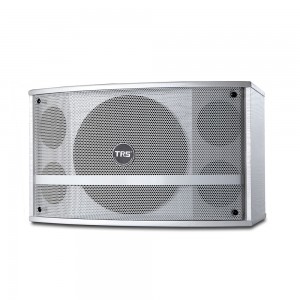The noise problem of active speakers often troubles us. In fact, as long as you carefully analyze and investigate, most of the audio noise can be solved by yourself. Here is a brief overview of the reasons for the noise of the speakers, as well as self-checking methods for everyone. Refer to when you need it.
When the speaker is used improperly, there are many situations that can cause noise, such as signal interference, poor connection of the interface and poor quality of the speaker itself.
Generally speaking, speaker noise can be roughly divided into electromagnetic interference, mechanical noise, and thermal noise according to its origin. For example, the amplifiers and converters of active speaker are all placed inside the speaker itself, and the noise caused by mutual interference is Inevitably, many other sound noises are caused by poor connection of signal wires and plugs or short circuits. Maintaining the excellent connection function of each plug is a necessary condition to ensure the normal operation of the speaker, such as some continuous beeps, Basically, it is the problem of the signal wires or plug connection, which can be solved by exchanging satellite boxes and other means. Here are some other noise sources and solutions.
The origin of electromagnetic interference noise and the treatment method
Electromagnetic interference can be mainly divided into power transformer interference and stray electromagnetic wave interference. This noise often manifests as a small hum. Generally speaking, the interference of the power transformer is caused by the magnetic leakage of the power supply of the multimedia speaker. The effect of installing a shielding cover for the transformer under the conditions permits is very significant, which can prevent the magnetic leakage to the greatest extent, and the shielding cover can only be made of iron material. We should try our best to choose products with big brands and solid materials. In addition, using an external transformer is also a good solution.

Stray electromagnetic wave disturbing noise and treatment method
Stray electromagnetic wave interference is more common. Speaker wires, crossovers, wireless devices, or computer hosts can all become sources of interference. Keep the main speaker as far away from the host computer as possible under the agreed conditions, and reduce the peripheral wireless equipment.
Mechanical noise treatment method
Mechanical noise is not unique to active speakers. During the operation of the power transformer, the vibration of the iron core caused by the alternating magnetic field will produce mechanical noise, which is very similar to the buzzing sound announced by the fluorescent lamp ballast. Choosing good quality products is still the best way to prevent this kind of noise. In addition, we can add a rubber damping layer between the transformer and the fixed plate.
It should be noted that if the potentiometer is used for a long time, there will be poor touch between the metal brush and the diaphragm due to dust accumulation and wear, and noise will occur when rotating. If the screws of the speaker are not tightened, the inverted tube will not be handled properly, and mechanical noise will also occur when playing big dynamic music. This kind of noise is generally expressed as a kerala noise when the volume or high and low knobs are used to adjust the volume.
This kind of thermal noise can be dealt with by replacing low-noise components or reducing the working load of components. In addition, lowering the working temperature is also one of the most effective ways.
In addition, some computer speakers will also show noise when the volume is adjusted too high. This situation is because the output power of the power amplifier may be small, and the large dynamic peak signal formation at the moment of music cannot be avoided. Perhaps it is caused by the distortion of the speaker overload. This kind of noise is characterized by hoarse and weak sound. Although loud, the sound quality is extremely poor, the tone is dry, the high pitch is rough, and the bass is weak. At the same time, those with indicator lights can see the beats that follow the music, and the indicator lights turn on and off, which is caused by the severely lowered power supply voltage of the circuit under the overload condition.
Post time: Oct-15-2021
